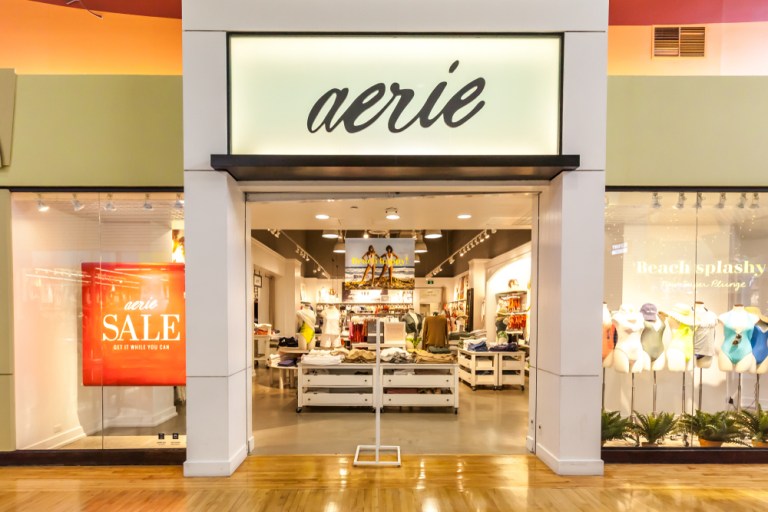
A little lingerie can go a long way — particularly for a brand that was recently working hard to reinvent itself for a consumer set that had moved past the mall.
American Eagle was a ubiquitous mall brand of the 90’s that suddenly found itself adrift in the 2010’s as consumers were jumping ship to digital. Many of its fellows folded entirely — The Limited and Aeropostal went bankrupt — while its other competitors in the youth apparel market often limped along, like The Gap.
Fast-fashion was the order of the day, and American Eagle seemed to be a brand at risk of falling fatally out of favor with its consumers.
But American Eagle, as it turned out, had a bit of an ace up its sleeve in the form of Aerie — its emerging lingerie and comfort wear line that has ended up striking a major chord with younger consumers.
“After starting a Body Positivity movement, Aerie is nothing short of spectacular, delivering record growth rates and gaining market shares in the intimate space,” CEO Jay Schottenstein told investors on a call last month.
And without crediting Aerie with the entirety of the body positivity movement, it is reasonable to say that starting in 2014, long before the use plus-sized models became something of a wokeness standard in marketing, Aerie was enthusiastically pursuing its “real person” customer with its non-airbrushed, regular (albeit really good looking) person models for the “Aerie Real.”
Female shoppers can also upload selfies of themselves — and all their flaws — using the hashtag #AerieReal, Foyle said. The campaign represents a stark contrast from other lingerie brands that showcase near-flawless models. And AerieReal has grown since then, with the brand encouraging actual customers to upload actual shots of themselves wearing the product — flaws and all.
And the realness, according to Jennifer Foyle, Aerie’s global brand president, has a big effect on consumers, who write often to say how much the brand has made a different to their body image. It has built a very loyal following — which in turn, has caught the eye of the rest of the marketplace.
“Now everyone is kind of doing it because it’s the trendy thing to do and it’s cool to be body-accepting,” Janine Stichter, an equity analyst at Jefferies, told CNBC.
And while other brands have embraced the trend, including the segments ranking 700-pound gorilla L-Brands Victoria Secret, Aeries offerings have an feeling of greater authenticity, according to Stitcher, which has made its efforts in creating a loyal community more lasting.
And, as it has turned out, more growth stimulating. As both American Eagle and Aerie continue to grow, American Eagle’s stock is up 114 percent year-on-year, and the firm’s s same-store sales growth in the first quarter rose 38 percent, on top of a 25 percent increase in 2017.
Last year, Aerie was valued at $500 million, up from $200 million in 2017. The company is looking to nail down a $1 billion valuation over the next few years.
And while that sounds ambitious on first glance, it is worth noting that the American Eagle brand’s push to reset its brand goes beyond what is visible to consumers in their stores. Because while sales have been increasing on the front-end, AE has been quietly plugging away on the backend, making sure it is more able to service customer needs across channels with what Paige Marvin, director of distribution and operations applications, has called a “major overhaul” of its warehouse picking technology to increase its employees’ picking speed per hour for peak season.
It was simple change: new Radio Frequency (RF) devices to help workers find and scan the items to be picked and shipped. But it was a change that made a big difference when it came to how well they were able to find and ship items during the peak Q4 holiday season, Marvin noted.
“We really did not have issues,” she said. “The work we did all year allowed us to roll out for peak,” she noted at an industry event.